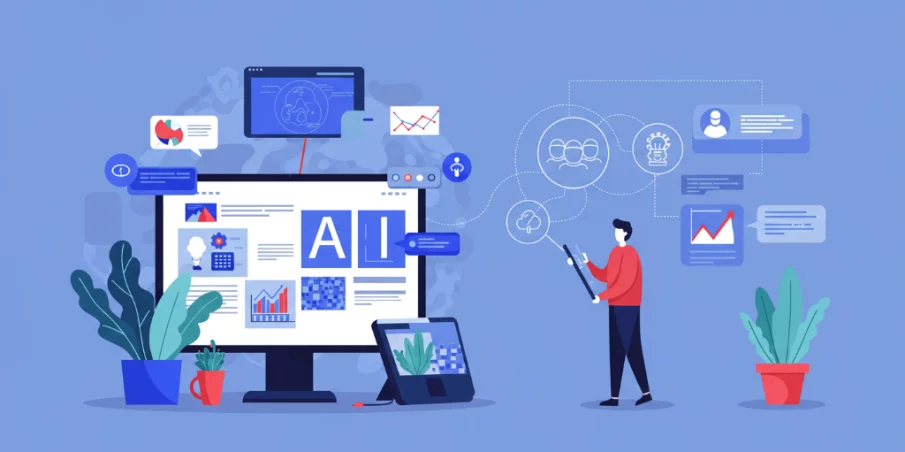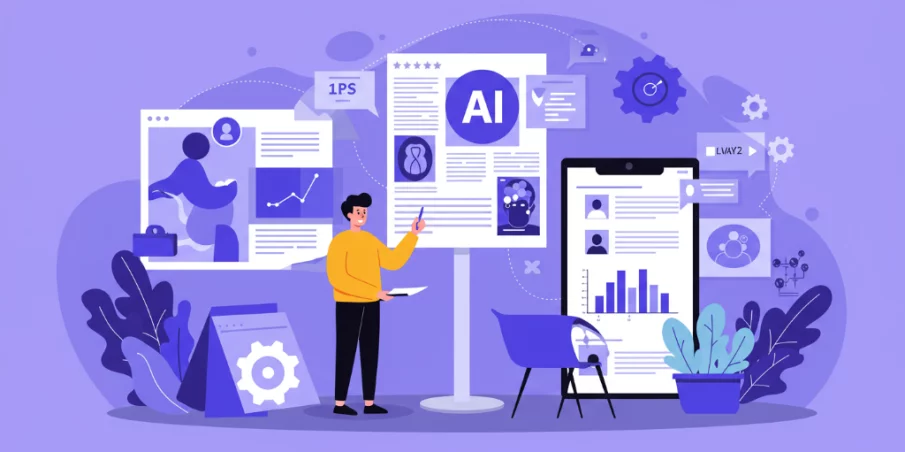How to Keep Up with AI News

Artificial intelligence is everywhere, from the apps on your phone to the algorithms shaping what you see online. It’s exciting, fast-moving, and sometimes a little overwhelming. How do you stay in the loop without drowning in tech jargon or endless articles? Keeping up with AI news doesn’t have to feel like a full-time job. With the right approach, you can stay informed, understand what’s happening, and even have fun along the way. This guide is your roadmap to navigating the world of AI news, tailored for regular folks who want to stay curious and connected.
Let’s dive into practical, everyday ways to keep up with AI news, from finding trustworthy sources to building habits that fit your life. Whether you’re scrolling on your commute or sipping coffee at home, you’ll have the tools to stay in the know.
Why Staying Updated on AI News Matters
You might be wondering, why bother keeping up with AI news at all? It’s not like you’re building a robot in your garage. But AI is shaping the world in ways that touch your daily life. It’s in the voice assistants you talk to, the recommendations on your streaming apps, and even the ads that seem to know exactly what you’re shopping for. Understanding AI news helps you make sense of these changes and stay ahead of the curve.
For example, knowing about new AI tools can save you time at work—like using a writing assistant to draft emails faster. Or maybe you’re curious about how AI is being used in healthcare, like diagnosing diseases earlier. Staying informed also means you can spot hype from reality. Not every AI breakthrough is as life-changing as the headlines claim, and a little knowledge helps you separate fact from fiction. By keeping up, you’re not just a bystander—you’re someone who gets what’s going on and can join the conversation.
The AI world moves fast, though. A new tool or discovery pops up almost daily, and it’s easy to feel left behind. That’s why having a game plan for staying updated is so important. Let’s talk about how to build one.
Finding Reliable AI News Sources

The internet is bursting with information, but not all of it is worth your time. To keep up with AI news, you need sources you can trust—ones that explain things clearly without burying you in tech-speak. The good news? There are plenty of options out there, from top websites to keep up AI news to AI newsletters, that cater to regular readers like you.
One standout is AIOnPulse. It’s an aggregator that pulls together AI news from multiple sources, giving you a one-stop shop for what’s happening. Instead of hopping between a dozen websites, you get a curated feed of articles, updates, and insights. It’s like having a friend who reads everything and tells you the best bits. AIOnPulse covers everything from new AI tools to ethical debates, so you’re getting a broad view without the hassle.
Beyond aggregators, individual websites can be goldmines too. The Verge has a dedicated AI section with stories that break down complex topics into readable, engaging pieces. If you want a mix of news and analysis, TechCrunch dives into how AI is shaking up industries like gaming or finance. For a global perspective, BBC News often covers AI’s impact on society, like how it’s changing jobs or privacy laws. These sites are great because they prioritize clarity and relevance, so you’re not wading through endless technical details.
Don’t sleep on newsletters either. Subscribing to something like The Algorithm from MIT Technology Review delivers AI updates straight to your inbox. It’s bite-sized, well-written, and perfect for catching up over breakfast. The key is to pick a few sources that vibe with your style—whether you love in-depth stories or quick summaries—and stick with them.
Using Social Media to Stay in the Loop
Social media can be a treasure trove for AI news if you know where to look. Platforms like X are buzzing with real-time updates, opinions, and links to articles you might not find otherwise. The trick is to follow the right people and communities so your feed stays useful, not chaotic.
Start by following AI experts and journalists who share reliable insights. Accounts like @AIOnPulse on X are a great bet—they post regular updates and link to stories from across the web. You can also follow writers like Will Knight from Wired, who covers AI in a way that’s approachable yet deep. Hashtags like #AI or #ArtificialIntelligence can help you discover trending topics, but be warned: they can get noisy. Check the accounts sharing those hashtags to see if they’re legit before diving in.
Social media’s strength is its immediacy. When a new AI model drops or a company announces a big move, you’ll often see it on X before it hits traditional news. For instance, when OpenAI releases a new version of ChatGPT, X lights up with reactions, demos, and hot takes. You get a front-row seat to what people are excited (or skeptical) about. Just don’t take everything at face value—cross-check big claims with a trusted source like AIOnPulse or The Verge to avoid falling for hype.
One downside? Social media can suck you into a rabbit hole. To keep things manageable, set a time limit for scrolling or use a tool like Pocket to save articles for later. That way, you’re staying informed without losing half your day.
Building a Habit of Staying Informed

Keeping up with AI news isn’t about reading every article out there—it’s about making it a seamless part of your routine. Think of it like checking the weather: a quick, regular habit that keeps you prepared. Here’s how to make it stick.
Set Aside Dedicated Time
You don’t need hours to stay updated. Even 10-15 minutes a day can do the trick. Try pairing it with something you already do, like sipping your morning coffee or winding down before bed. Open up AIOnPulse or your favorite news app and skim the headlines. If something catches your eye, dive deeper. This small commitment adds up, and soon you’ll feel like you’ve got a handle on the AI world.
If daily feels like too much, aim for a weekly catch-up. Sunday afternoons are great for this—grab a snack, pull up The Algorithm, and read through what you missed. The key is consistency, not perfection.
Use Tools to Stay Organized
With so much news flying around, it’s easy to lose track of what you want to read. Tools like Feedly let you create a custom feed of AI news from sites like TechCrunch or BBC. You can organize articles by topic—like AI in healthcare or AI ethics—so you’re not overwhelmed. Plus, it’s mobile-friendly, so you can check it on the go.
Another handy trick is setting up Google Alerts for “artificial intelligence” or specific topics like “AI tools.” You’ll get emails with relevant articles, saving you the effort of searching. Just don’t overdo it with too many alerts, or your inbox will turn into a jungle.
Engage with What You Learn
Reading is one thing, but engaging with AI news makes it stick. Share an interesting article on X or chat about it with a friend. Explaining what you’ve learned—like how AI is helping farmers predict weather—helps you understand it better. You could even join a community like Reddit’s r/artificial to swap ideas with other curious folks. Engaging doesn’t just keep you informed; it makes the whole process more fun.
Understanding AI News Without the Jargon
AI news can sometimes feel like it’s written in another language. Words like “neural networks” or “large language models” get thrown around, and suddenly you’re lost. Don’t worry—you don’t need a PhD to get the gist. Here’s how to cut through the jargon and understand what’s really going on.
Focus on the Big Picture
When you read an article, ask yourself: What’s the main point? Is this about a new tool, a company doing something cool, or a debate about AI’s impact? For example, if you see a story about “AI beating humans at chess again,” the big picture might be that AI is getting better at complex tasks. Skip the technical details and zero in on why it matters. Sites like BBC News are great for this—they often explain the “so what” in plain English.
Look for Analogies and Examples
Good writers use analogies to make AI concepts relatable. If an article compares AI to a super-smart librarian who can find any book in seconds, that’s a clue it’s talking about how AI processes information. AIOnPulse often links to stories with these kinds of explanations, so keep an eye out. If an article feels too dense, try searching for a simpler version on a site like The Verge.
Ask Questions When You’re Stuck
If you hit a term you don’t get, don’t just skim past it. Pop it into Google or ask a tool like Grok for a quick explanation. For instance, if you’re confused about “machine learning,” a search might tell you it’s like teaching a computer to learn from examples, the way you’d teach a kid to recognize animals. Over time, you’ll build a mental glossary, and the news will feel less intimidating.
Avoiding Information Overload
The AI world is a firehose of information, and it’s easy to feel swamped. How do you keep up without burning out? The answer is to be selective and intentional about what you consume.
Start by narrowing your focus. You don’t need to know everything about AI—just the parts that spark your interest. Maybe you’re into how AI is changing entertainment, like generating movie scripts. Stick to stories about that and skip the rest. AIOnPulse makes this easy by letting you browse by category, so you can zero in on what matters to you.
Next, beware of clickbait. Headlines like “AI Will Take Over the World!” are designed to grab attention, not inform. If a story sounds too wild, check a trusted source like TechCrunch to see if it holds up. And don’t feel pressured to read every article in full. Skim the intro and conclusion to decide if it’s worth your time.
Finally, give yourself permission to take breaks. If you’re feeling overwhelmed, step away for a few days. The AI world will still be there when you’re ready to jump back in. Staying curious is a marathon, not a sprint.
Making AI News Fun and Relevant

Keeping up with AI news doesn’t have to feel like homework. When you tie it to your interests, it becomes something you look forward to. Love gaming? Check out how AI is designing new levels or powering smarter NPCs. Into cooking? Look up AI recipes or apps that suggest meals based on what’s in your fridge. By connecting AI news to your life, you’re not just learning—you’re discovering tools and ideas that make things more exciting.
Try experimenting with what you learn. If you read about a new AI chatbot, give it a spin and see what it can do. Or if you hear about an AI art tool, play around with it to create something cool. Sites like AIOnPulse often highlight these kinds of practical tools, so you can go from reading to doing in no time.
You can also turn it into a social thing. Share a wild AI story with friends or post about it on X to see what others think. It’s a great way to spark conversations and learn from different perspectives. When AI news feels like part of your world, staying updated becomes effortless.
Wrapping It Up
Keeping up with AI news is all about finding the right balance—staying curious without getting overwhelmed. By leaning on trusted sources like AIOnPulse, building a simple routine, and focusing on what sparks your interest, you can stay in the loop without breaking a sweat. It’s not about knowing every detail; it’s about understanding the big ideas and how they connect to your life.
So, start small. Pick one or two sources, carve out a few minutes each week, and explore at your own pace. Before you know it, you’ll be the one explaining AI to your friends, and you’ll have a front-row seat to one of the most exciting fields out there. Happy reading!
More to Read:
Previous Posts:






